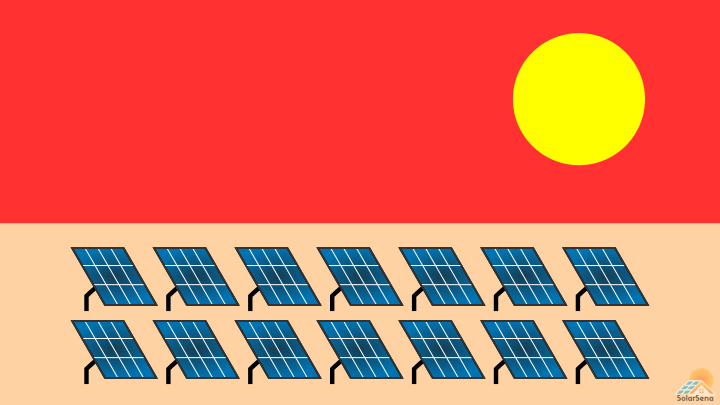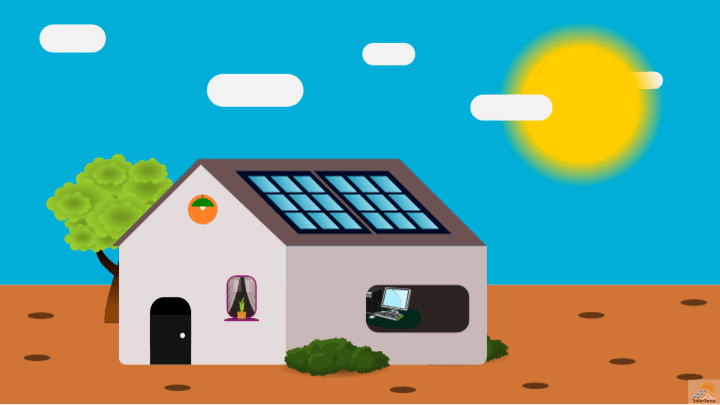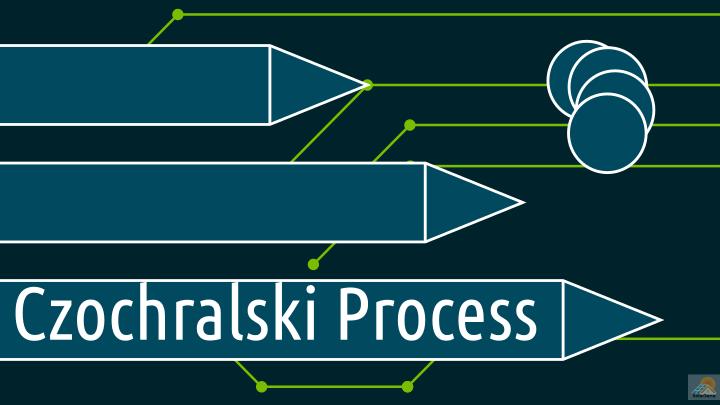The solar azimuth angle is one of the two parameters in deciding the orientation of solar panels; the other is the tilt angle. Understanding how the solar azimuth angle affects solar power is an important aspect in designing the photovoltaic and solar thermal system. This guide will in-depth your knowledge on the azimuth angle and help to decide at what azimuth angle you should orient your solar panels.
What is the solar azimuth angle?
Before we proceed directly to the main subject, it will be better to understand what exactly the solar azimuth angle means. The solar azimuth angle for solar panels is the angle between the north and the sun with panels on the local horizon. The local horizon is the imaginary horizontal plane on which solar panels are installed.
The below diagram illustrates the same.

By definition, the azimuth angle is 0° when the sun is north of solar panels. The angle is 90° when the sun is east of panels. And it is 180° and 270° for the south and west.
The sun rises from the east, so in the morning the azimuth angle will be around 90°. As the day processes, the angle increases or decreases depending upon the latitude and longitude of the location. At the time of dusk, the angle approaches 270°.
Azimuth angle and directions
Since the azimuth angle is defined via directions., from one, we can find the other. The below chart relates both.

How does the azimuth angle decide the direction of solar panels?
Solar panels absorb the falling sunlight and convert it into electricity. To have maximum solar power, you must face your solar panels right in front of the sun. It is practically impossible to always have solar panels facing the sun. That is because the position of the sun in the sky changes every hour. And with that, the solar azimuth also changes continuously.
Solar trackers could solve this problem since they monitor the position of the sun in the sky and direct solar panels accordingly. However, for most homeowners and small businesses, solar trackers are not an economical option. Future, they become meaningless for roof-type installations. Individuals will simply prefer fixing solar panels in one particular direction.
The question continues to bother us at what angle we must face solar panels. It is where the concept of the optimal azimuth angle comes in. Instead of maximizing solar power every hour, we want to maximize solar power annually. We just want to find a fixed azimuth angle that will give maximum sunlight exposure to solar panels over the entire year, not every single hour.
Once we find it, we can decide the optimal direction for solar panels using the following table.
| Azimuth angle (in degrees) | Direction for solar panels to face |
|---|---|
| 337.5 to 22.5 | North |
| 22.5 to 67.5 | Northeast |
| 67.5 to 112.5 | East |
| 112.5 to 157.5 | Southeast |
| 157.5 to 202.5 | South |
| 202.5 to 247.5 | Southwest |
| 247.5 to 292.5 | West |
| 292.5 to 337.5 | Northwest |
How to calculate the optimal azimuth angle for solar panels?
The sun’s position in the sky changes hourly as well as monthly. With that, solar energy received per unit area per unit time—i.e., solar irradiance—also changes. For a particular location, the peak solar irradiance is when the sun is overhead. It happens around noon (11:00 PM to 2:00 PM), and the solar elevation angle reaches 90°. During this portion of the day, panels produce the utmost solar power.
To get maximum solar power, we must adjust panels at the azimuth angle near solar noon. You can use SolarSena’s azimuth angle calculator to find the azimuth angle of your location.
For example, if your azimuth angle is 160°, as per the previous table, the south direction is the best direction for you.
Overall best azimuth angle for solar panels
We also have to account for monthly variation in the azimuth angle before selecting the optimal angle.
We can better understand this if we graph the variation.
The horizontal axis in the below figure represents months, the right vertical axis scales angle (in degrees), and the left vertical axis shows the direction of the solar panel for a given angle. Each curve in the figure represents a region.
The vertical axes are divided into shaded zones as per directions. For example, the 67.5° to 112.5° region is for the east.

This graph tells us a lot about the sun’s position and the optimal angle.
The regions in the northern hemisphere, away from the equator, have higher azimuth angles. Seoul, Berlin, New York City, Denver, Los Angeles, and Austin are quite far from the equator and have latitudes above 30° N. The South facing panels will be recommended for these regions.
Another thing to notice here is all the regions that belong to the contiguous United States (Dever, New York City, Los Angeles) are strictly restricted in between 157.5° to 202.5°. Furthermore, this trend is valid for the entire mainland US. Thus, if you live in the US, your solar panels must face the south direction.
We can extrapolate this conclusion to other countries in the northern hemisphere as well.
The reverse is true for the southern hemisphere. Sydney, Australia, is at 33.87° S latitude. The solar azimuth angle at noon is always below 67.5°. For the major part of the year, the angle is in the northern zone in the graph. So, the north is the ideal direction for countries in the southern hemisphere.
A common rule of thumb—the south direction for the northern hemisphere and the north for the south hemisphere—originates using this graph.
For regions that are closer to the equator (e,g., Hawaii, Macapa,) the azimuth angle changes drastically. It is difficult to decide the optimal angle for these regions by looking at the graph. Rather sticking to the rule of thumb is advisable. For example, Hawaii is in the northern hemisphere, so the optimal direction is south.
Also, the impact of the azimuth angle of solar panels on power production decreases as we move toward the equator. It is because the tilt angle of panels becomes very small near the equator. As a result, panels are inclined almost flat, and the direction of panels becomes less relevant.
Optimal azimuth angle during the late afternoon
Many times, you want to maximize your solar power generation in the late afternoon, rather than at noon. Typically, the energy demand of homeowners starts to peak from the late afternoon. And some utility companies may charge based on time-of-use. So, maximizing your solar power in the evening could save you more bills than at noon.
The graph below gives the monthly variation in the solar azimuth angle at 4:00 PM.

From the above graph, it is crystal clear that the west is the optimal direction in the late afternoon. For countries in the northern hemisphere, the west and southwest are the best options, while for countries in the southern hemisphere, the west and northwest work very well.
People with their roofs not inclined toward the south (or north) can use the west and east direction to fulfill their energy needs.
Does the azimuth angle have any relation with the tilt angle of solar panels?
There are two parameters in deciding the direction of solar panels: direction and tilt angle. The azimuth angle decides the direction of solar panels, whereas the elevation angle determines the tilt angle. Both parameters have no direct relation; they are rather independent of each other.



